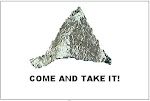A lot of working in an organization is about change management. Getting people to adapt to new ideas and processes is difficult, even if the new idea or process is a really good one. This phenomenon has been studied in business schools and there's a familiar graph that shows the adoption cycle (picture with this post). The cycle is often given in the context of product adoption, but it also relevant to process and technology adoption within a company.
In the Orthodox Divine Liturgy, I recognized this pattern as well.
The liturgy begins with the Gospels being held by the priests (innovator stage), and then there is a part of the liturgy called "the little entrance" where the Gospel is brought out to the people and put onto the alter (early adoption), it is later read and a homily is given (the priest providing an understandable explanation in order to "cross the chasm"), this is all to prepare the people for the Great Entrance where the Eucharist is brought out through the people and placed on the alter (early majority) and then the congregation is led through its collective preparation to ultimately receive it and incorporate it into their lives (late majority). And then the skeptics and catechumens are there to watch and learn (laggards).
To me it seems like the Divine Liturgy is a good model to use to think about how to introduce, socialize, and gain acceptance for a new idea into a group of people.
The Bible says in John 10:2 that "The one who enters by the gate is the shepherd of the sheep." To me this can be seen in the liturgy as Christ enters in a way that we can understand, is introduced with authority that we recognize, and in a way that facilitates the acceptance of the faithful and through its consistency, educates newcomers and skeptics.
Anyone who has worked anywhere for very long knows that when introducing a new idea, the proper approach is key to socialize the idea and gaining its adoption, and you have to understand the patterns that the people are accustomed to and use those to bring the transformative ideas into their daily workflows.
Many organization focus heavily on creating and implementing rituals that help teams to adopt new ideas and even to understand how to know what to work on for the day. In scrum and Agile methodologies, these patterns are even often referred to as "rituals". So it's interesting to me to see the parallels between these very new management methodologies and the ancient traditions of the church.

